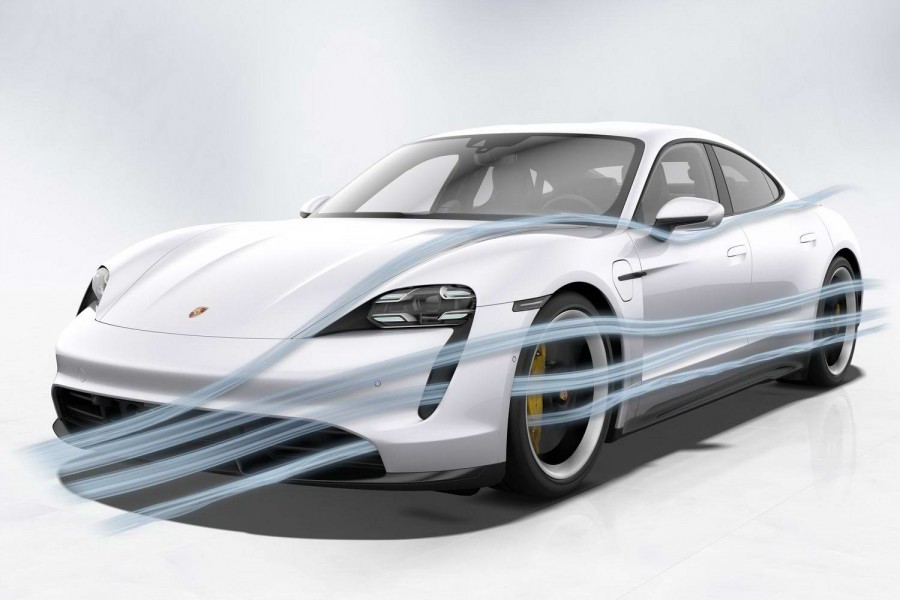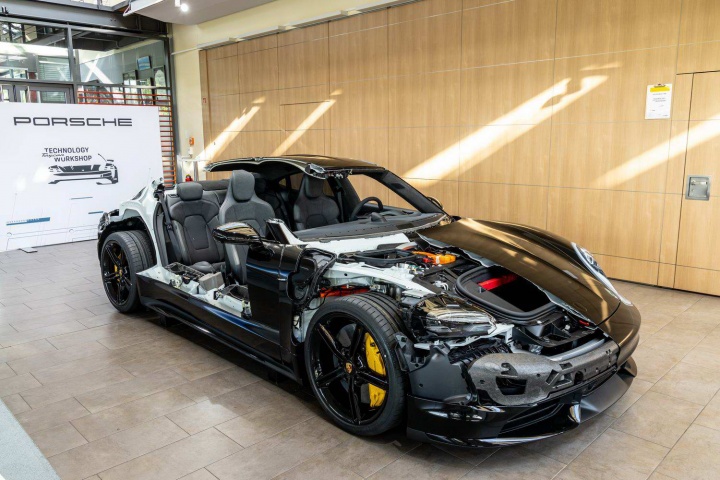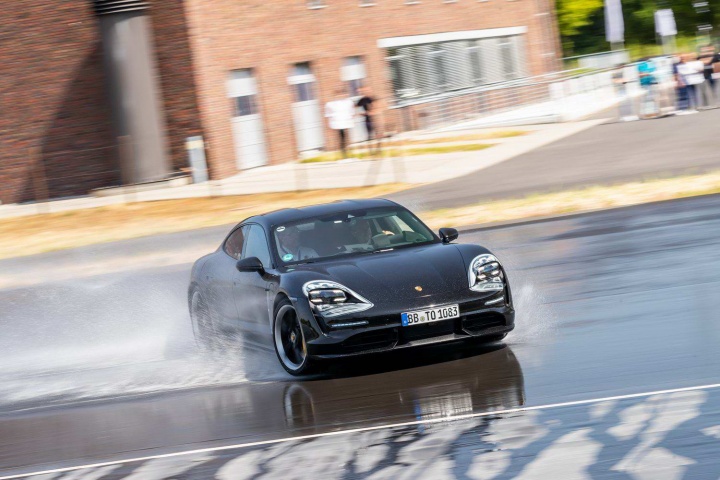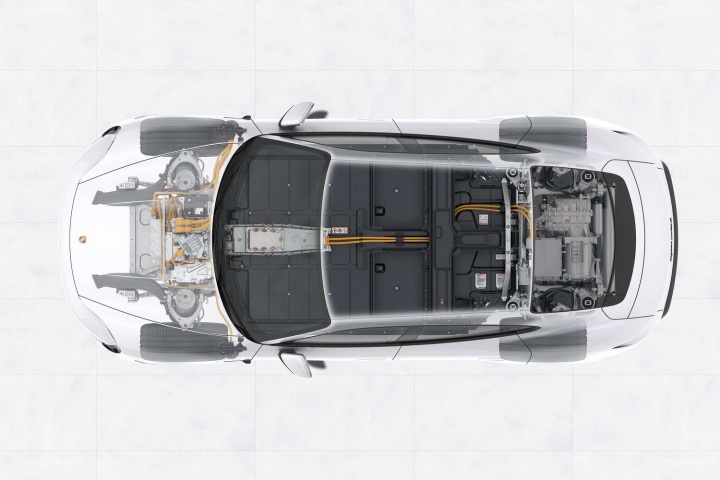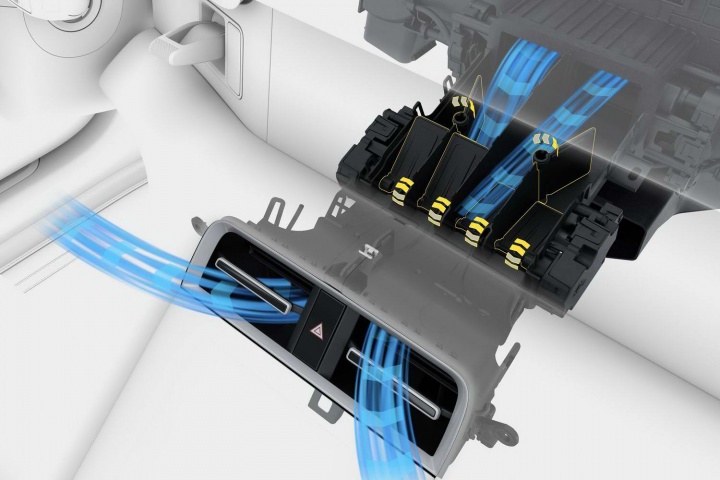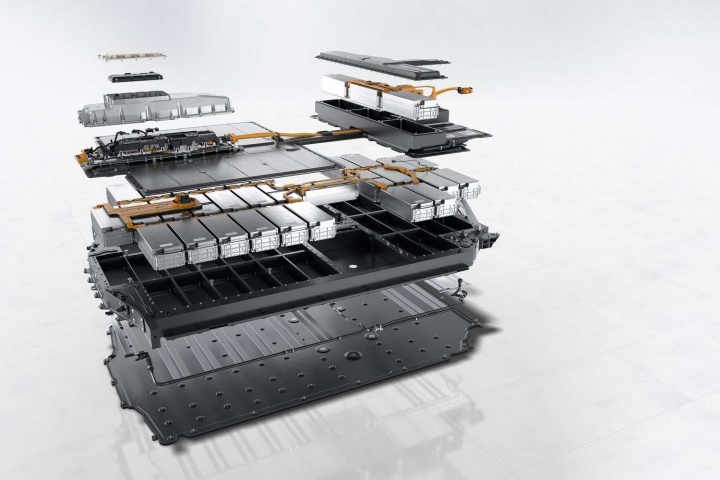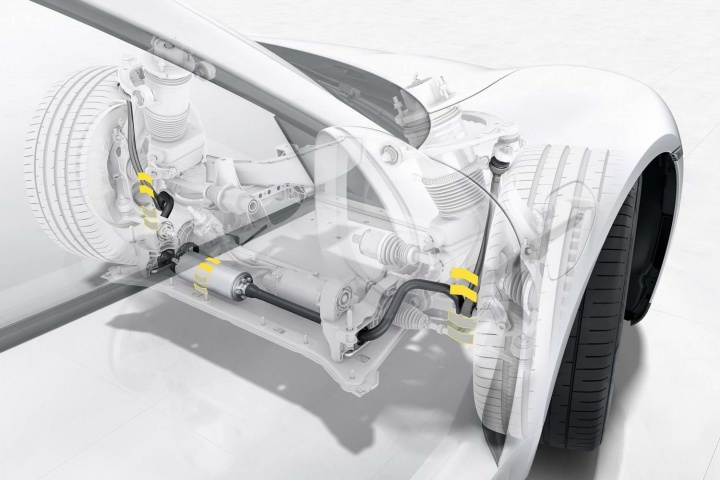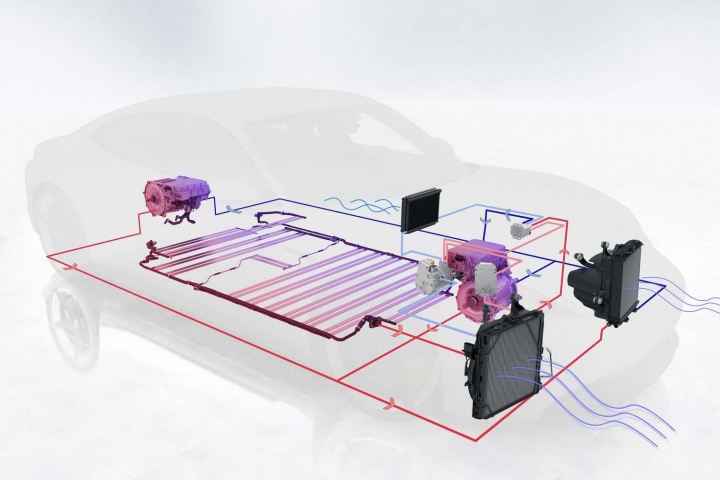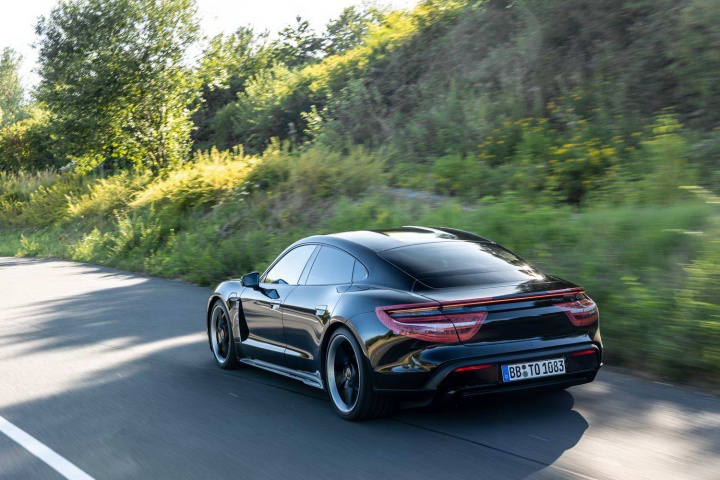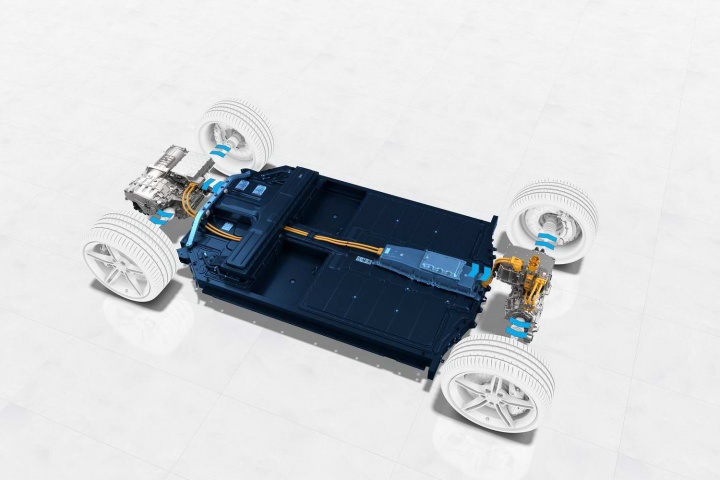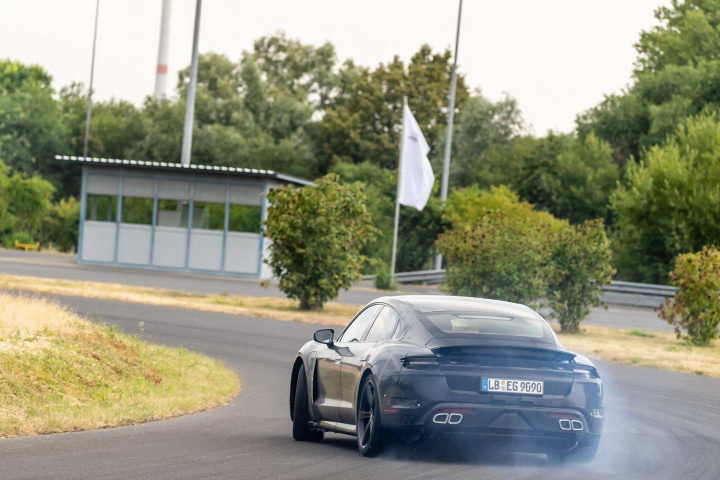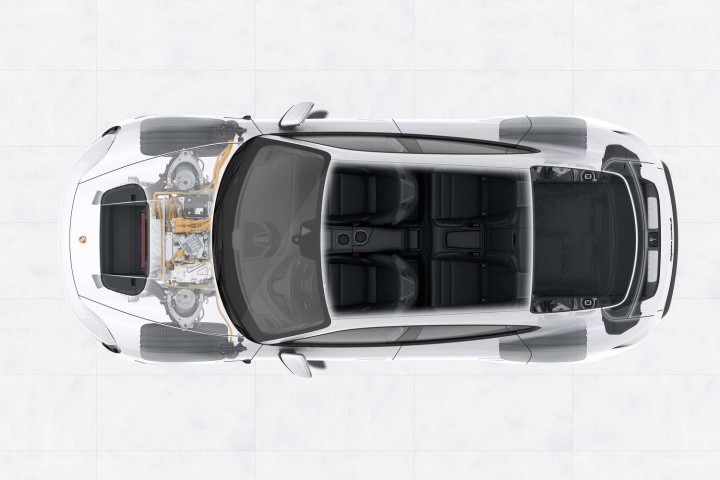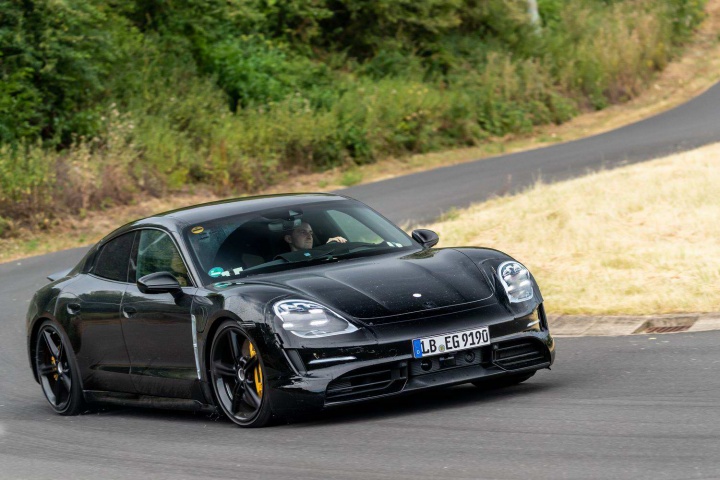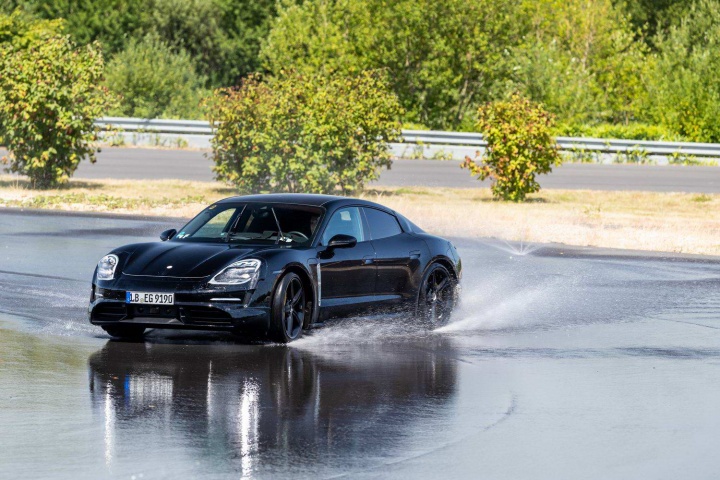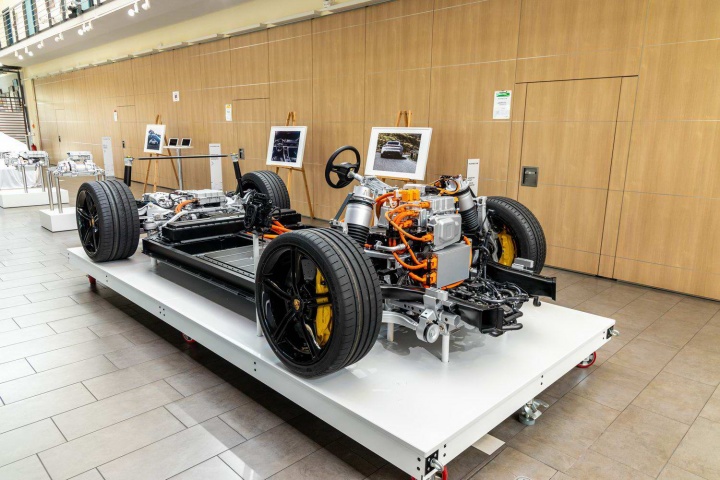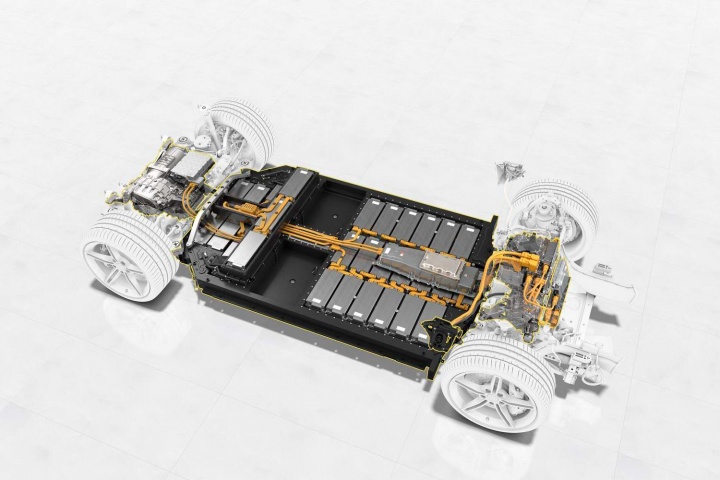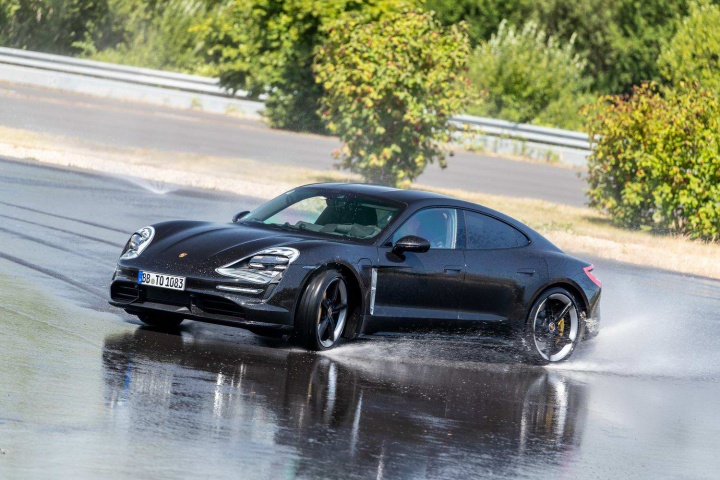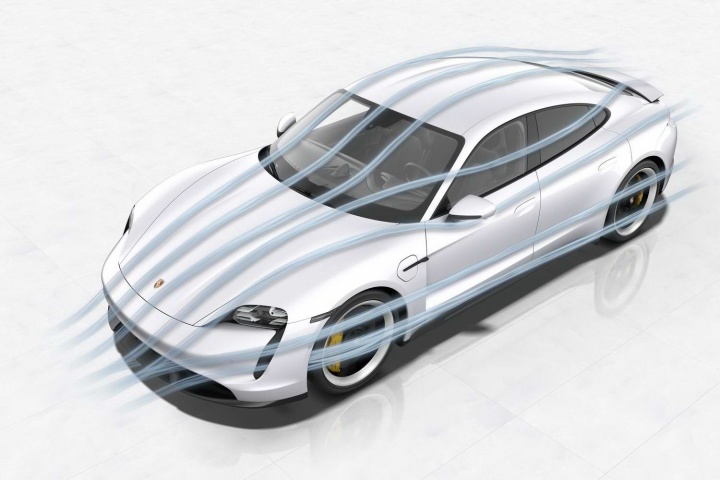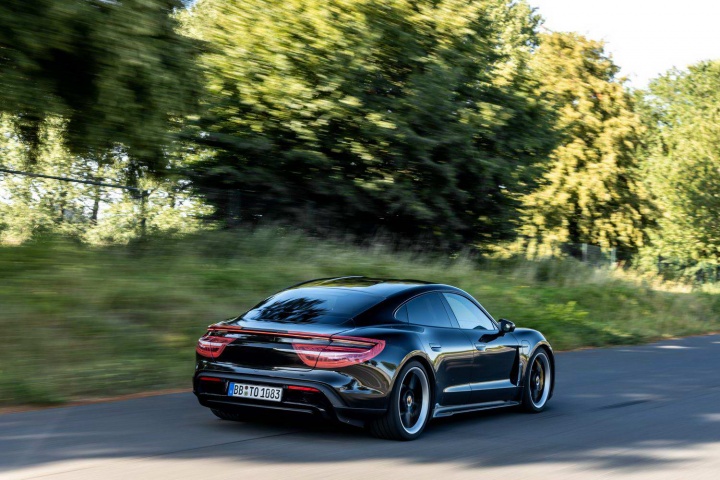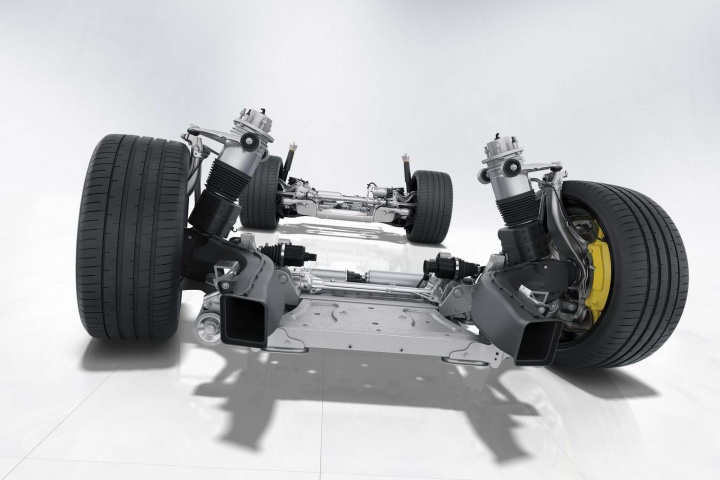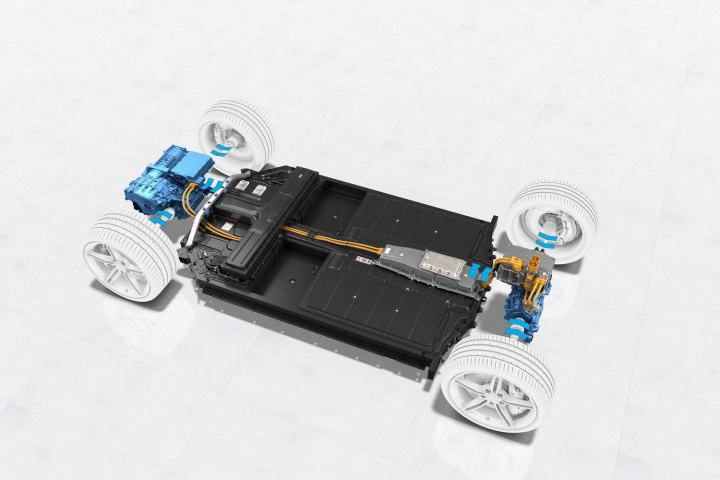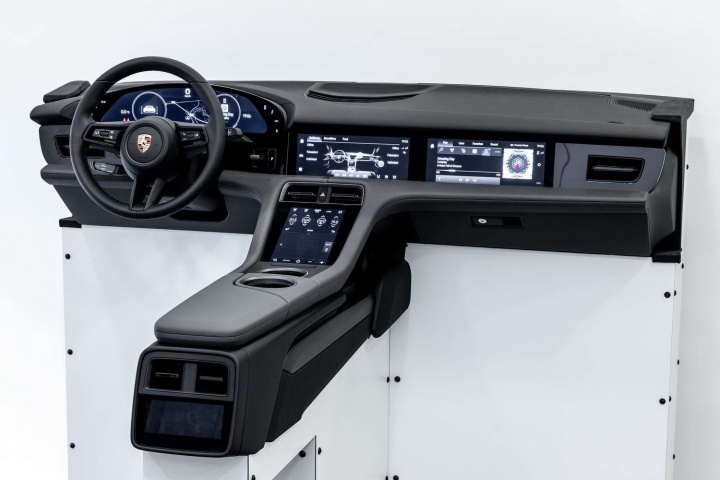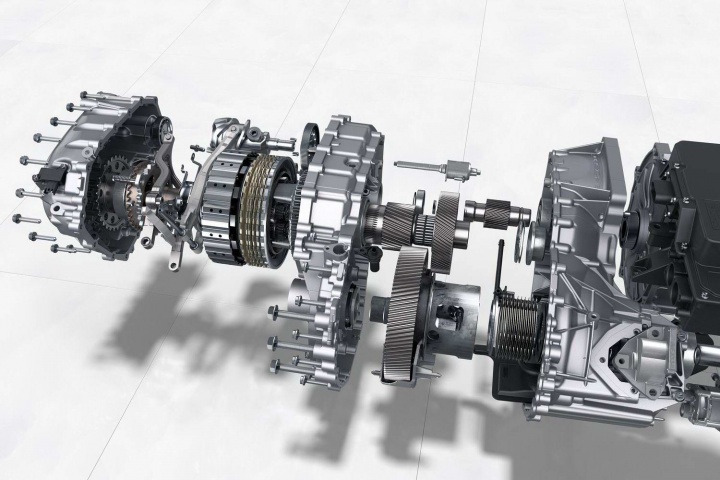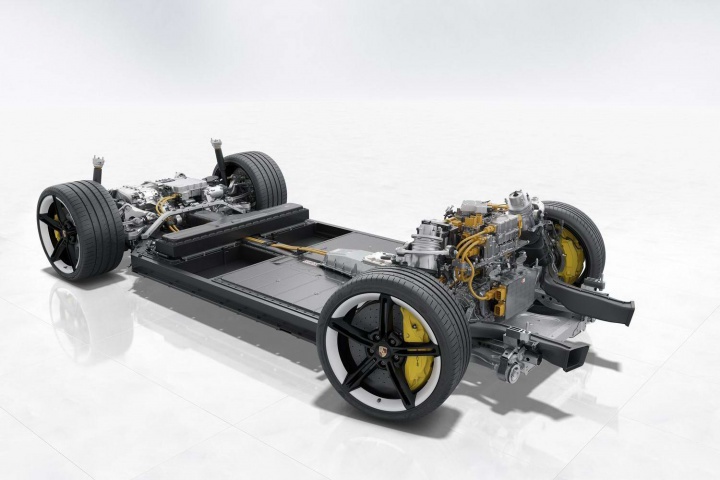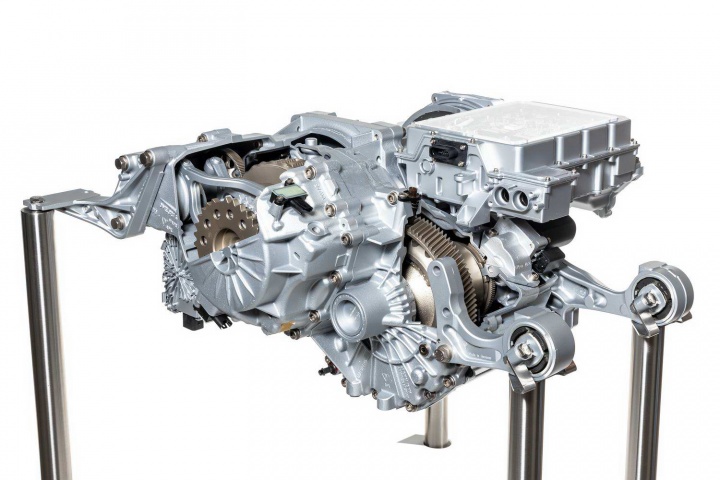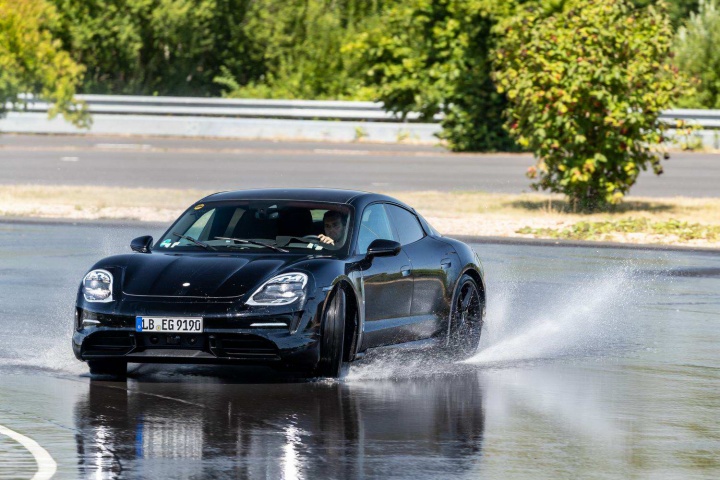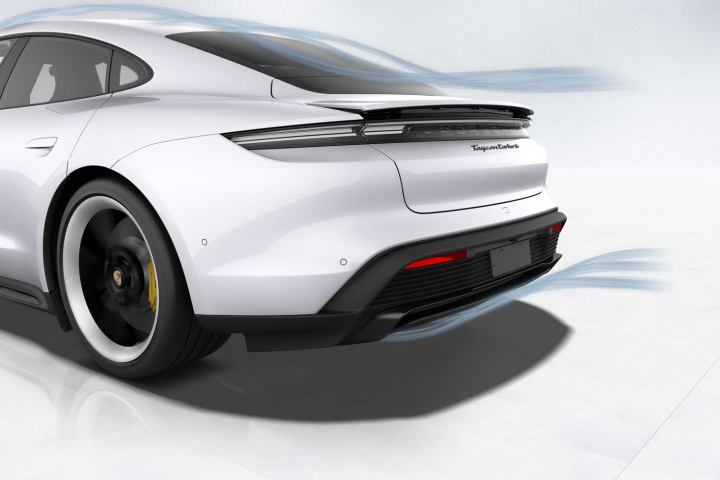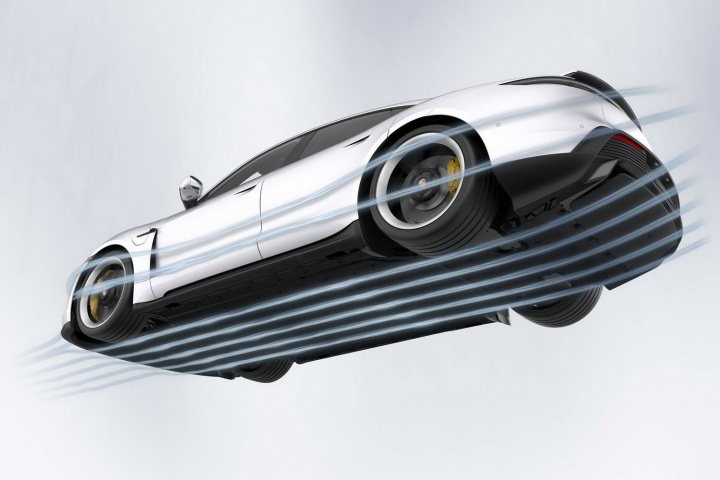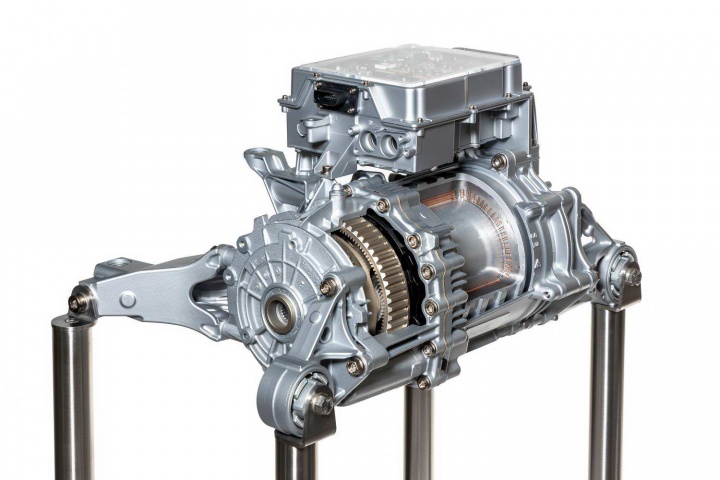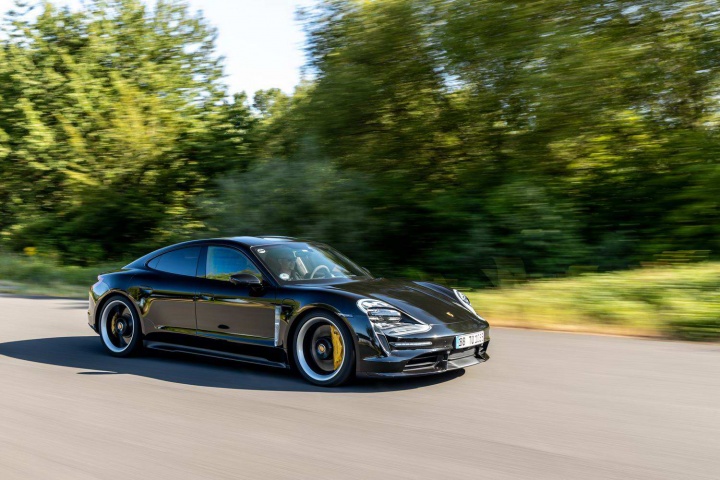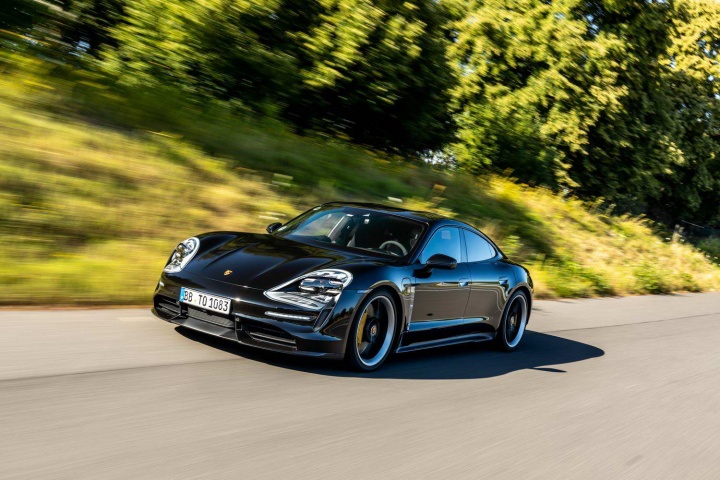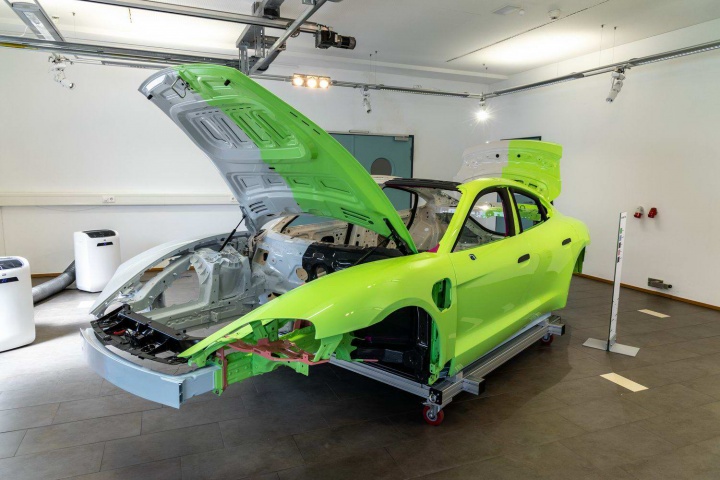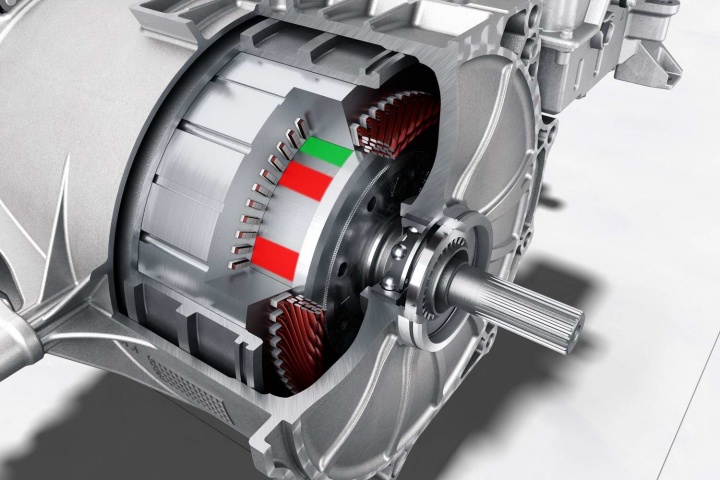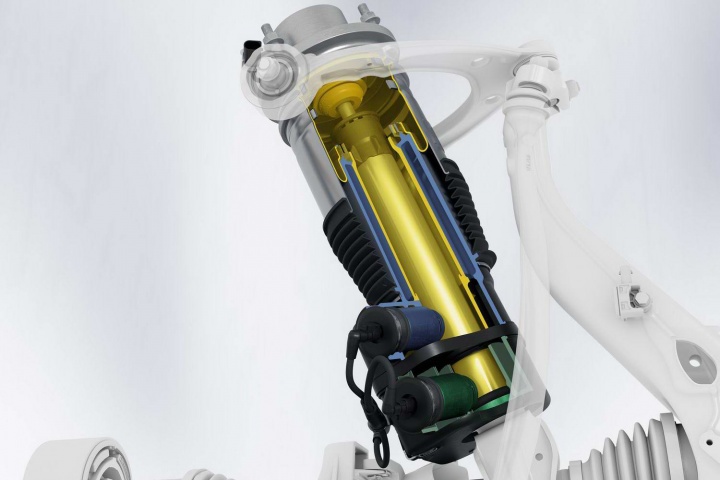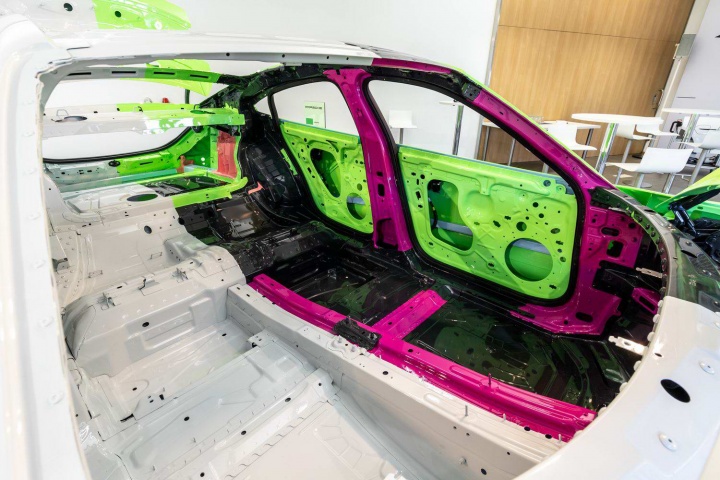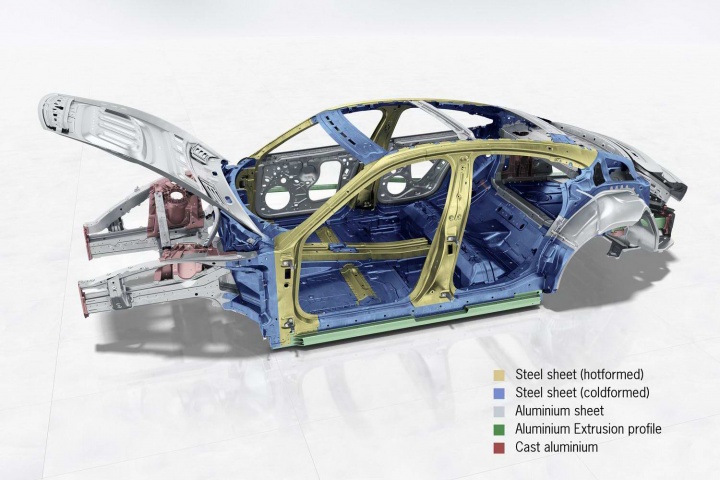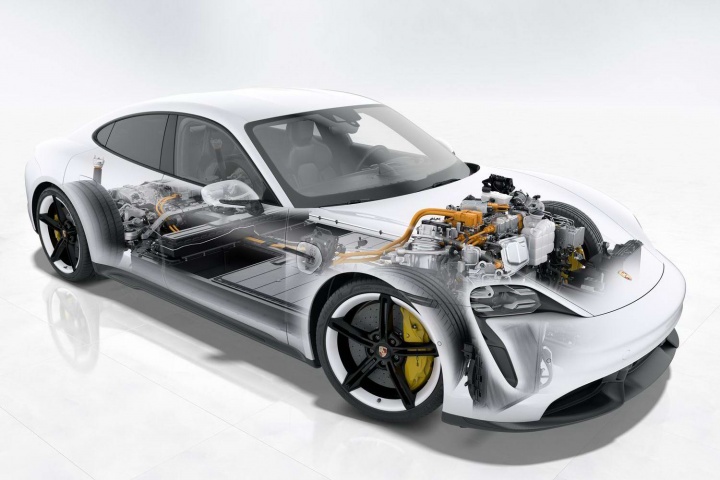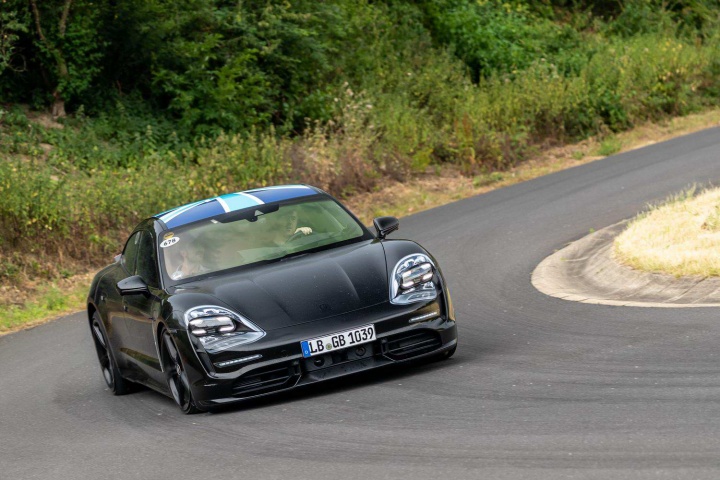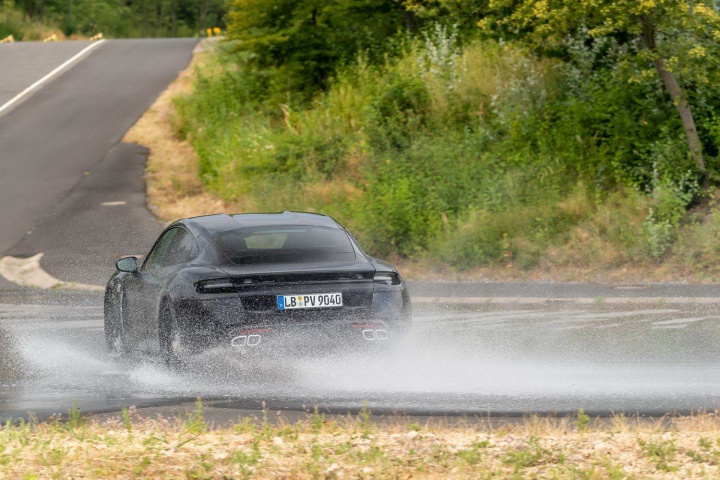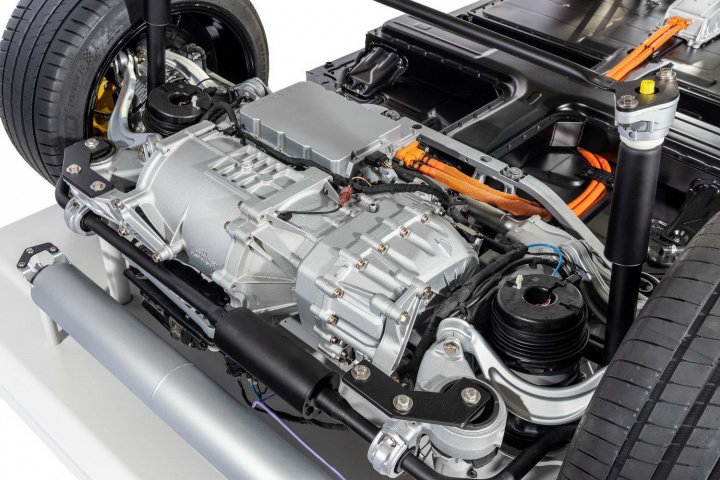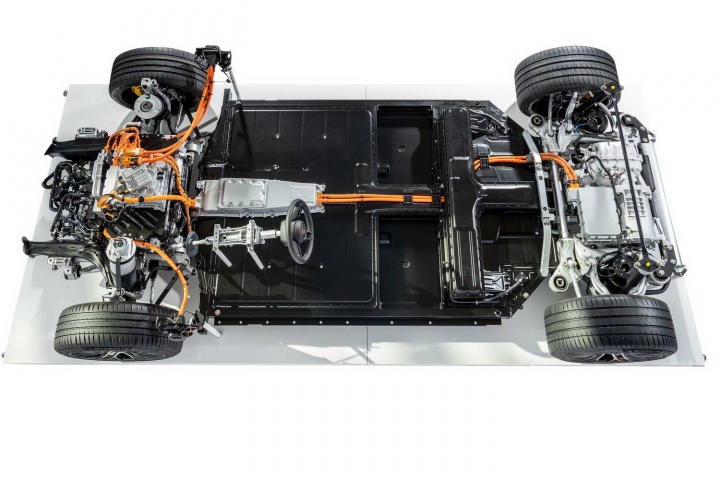The Porsche Taycan, the German company's first-ever full electric vehicle, has been revealed to the world - but we've already had a full run-down of its technical make-up, heard the incredible numbers it is going to develop... and experienced how those are going to translate into the production reality, courtesy of a passenger ride in pre-production models of this astonishing electric Porsche. Prepare for lots of use of the word 'gamechanger' in the months to come.
Power, power, power and more power
Let's get down to brass tacks: the Taycan has some phenomenal stats up its sleeve. It's going to launch in two versions of the same drivetrain arrangement, but one of them will have slightly more power, performance and chassis goodies - and, despite the fact these cars obviously do not have an internal combustion engine between them (much less any form of forced induction), they will be branded Taycan Turbo and Taycan Turbo S, continuing Porsche's time-honoured naming traditions despite the radical EV make-up.
From a pair of electric motors (one on the front axle, one on the rear), either model of the Taycan is nominally rated at 460kW, which translates to 625hp. The Turbo, with a slightly smaller electric motor up front, can raise that to 505kW (687hp) on an overboost phase (Launch Control, essentially), which it backs up with 850Nm of torque. That's enough to power it from 0-100km/h in 3.2 seconds and on to 200km/h from rest in 10.6 seconds, while its electric range is anything between 387- and 453km.
Fast, but then the Turbo S goes further. It'll punch out 560kW on overboost, which is a colossal 761hp, and that's accompanied by four-figure torque - 1,050Nm of it, to be precise. Thus, 0-100km/h takes a preposterous 2.8 seconds, 0-200km/h takes 9.8 seconds and the full range is rated at 389-420km. Both cars are limited to an identical top speed of 260km/h, which basically raises the thought that on an Autobahn or really long airstrip, the Taycan Turbo S is probably capable of getting from a standstill to its V-max in comfortably less than 20 seconds.
ICE's time is limited
So, those are the headline figures. Now we'll drill down into details. Despite the fact it will likely be rather expensive, the Taycan will be built on the main production line at Zuffenhausen in numbers that should be pretty sizeable - Porsche wants to sell lots of examples of it. To that end, there are going to be other models of the Taycan beyond the two Turbos; the next maybe being a single-motor version with just rear-wheel drive, like a Taycan S or similar. In time, there will be lots of different Taycans, just as there are lots of different 911s.
So, it's an incredibly important car to Porsche, even if it might seem unattainable, mainly because it will be a good gauge for how the company is going to move forward into an all-electric era. One man who is convinced that the internal combustion engine (ICE) cannot survive long-term is Dr Robert Meier, the Taycan product line director, who says: "The combustion engine will be phased out by electric power. That's why, with Taycan, we have to build a car that's 100 per cent a Porsche."
It starts with the body-in-white. The Taycan is made of aluminium and steel, with alloy panels for all the bodywork, the boot lid and the inner panels of the doors. The car is made up of 40 per cent cold-formed steel, 23 per cent hot-formed steel, 18 per cent sheet aluminium, 11 per cent extruded aluminium, eight per cent cast aluminium and 0.7 per cent of other metals. Alone, the body in white has 3,139 spot welds, all of which leads to a torsional rigidity of 'in excess of 42,000Nm/degree', says Dr Lutz Trender, the Taycan's director for body integration.
Charge of the fast brigade
The battery pack itself, a lithium-ion item made up of 33 modules with 30 cells in each, resulting in 396 cells in total, weighs 140kg and is held into the Taycan's underside by nothing more advanced than 28 screws, where it forms an integral, load-bearing part of the structure. Load paths between the battery modules mean that, in the event of a crash, latitudinal and longitudinal forces are dissipated, so that individual damaged cells can be replaced if necessary - rather than having to swap out the whole pack.
That battery is rated at 93kWh, with a net capacity of 84kWh. Thanks to the Taycan's much-heralded 800-volt electrical system, it can charge on up-to-270kW DC connections; 400-volt architecture, much more prevalent in the current EV world, has a max charging rate of 150kW today, with a prediction of 200-250kW in the future. The Taycan, then, is already ahead of the curve at 270kW, while 800-volt charging is expected to go to 400-500kW in the years to come.
All of this means, according to Dr Klaus Rechberger, the manager of high-voltage integration for Taycan, that at its maximum charging speed the Porsche will suck down 100km of WLTP-accredited range in five minutes flat. In fact, with the Porsche Charging Planner active (part of the Taycan's onboard control system that can pre-condition the battery for optimal charging in all external temperature conditions), the Taycan will take in 80 per cent state of charge (SOC) in just 22.5 minutes.
Charging safety feature built-in
These numbers, of course, are dependent on finding one of the 400 European Ionity charging stations (by 2020, at least; currently, there are 125 in operation and another 46 being built), which will have six 350kW charging poles at each location. But an optional High Voltage Booster for the Taycan opens up the possibility of charging the Porsche EV on any charging station connection, not just the 800-volt ones. It makes the car 400-volt DC compatible, so 50- and 150kW charging points come into play; that'll mean more than 200,000 global charging points, will be available to Taycan owners.
There's also an 11kW onboard charger, allowing for home charging on a wallbox over a period of six to eight hours. That means, with an optional HV Booster fitted, that the Taycan diverts power differently according to what it's hooked up to: on an 800-volt charger, the power goes directly to the battery; on a 400-volt charger, it goes to the HV Booster first and then the battery; and on a 240-volt AC home system, it goes to the 11kW charger and then the battery. This last one is most important, because Porsche predicts that 70-80 per cent of customers will charge it at home on an 11kW connection.
The Taycan has various management features built in, like timer charging including smartphone remote control, the ability to link up to solar charging, cost-optimised charging (i.e., it will juice up overnight) and a failsafe called Blackout Protection - the Taycan measures all phases of the household's grid connection and prevents the EV from tripping the domestic electrics if overall demand is nearing tipping point, so it means you can safely switch your washing machine or your kettle on while you're charging the Porsche, without the fear of plunging the house into darkness. Finally, Porsche will guarantee the lithium-ion battery for eight years, after which the company reckons it should still retain 70 per cent of its overall capacity.
A real icebreaker
To access the charging ports, there are two sockets - an AC item on the driver's side and an AC/DC CCS on the passenger side. These are handed for world markets, so the CCS will be on the right of the car in left-hand-drive countries and the left in right-hand-drive territories like ours. As standard, they open like a fuel filler flap on modern cars or as on other EV/PHEV charging ports on current hybrids and EVs - as in, you press on part of the flap and it clicks open. But as an option, the charging points can be electrically powered. They slide back and up into the bodywork, and they even have a cold-weather function that increases motor torque by 20 per cent, while rocking the panel back and forth a few times to break any ice that might have formed on them.
Going back to the body for a moment, if you're wondering why the German marque didn't use carbon fibre-reinforced plastic (CFRP) in its make-up, given the Taycan Turbo weighs at least 2,295kg, it's down to costs. Dr Trender explains: "We considered CFRP for the body but it is just too expensive, considering the sales figures we are hoping for from the Taycan. We aim to sell lots of them, so CFRP is not a match for value on unit numbers sought, when compared to aluminium."
Small head, wide shoulders
Physically, the Taycan is designed to sit beneath the Panamera in the range and above the Cayenne, so it's 4,959mm long, 1,958mm wide (excluding mirrors), 1,380mm tall and possessed of a 2,900mm wheelbase. There are two luggage areas on the Taycan, an 82-litre item in the nose and a 400-litre cargo bay out back, this one capable of taking six carry-on suitcases as it has a deep recess right at the rear of the floor (behind the battery pack and rear-axle motor/gearbox assembly, basically), which allows two cases to stand upright, while much talk of a 'foot garage' for rear-seat passengers was made - mainly because the floor of the car is so low. Its super-smooth styling and completely flat underbody, which includes even the axles being covered over, leads to a coefficient of drag of 0.22-0.24, making it the slipperiest product in the Porsche portfolio.
We've already talked about the Taycan's interior in an earlier article, so sticking with the outside of the car, part of that low coefficient of drag figure is thanks to Porsche Active Aerodynamics (PAA), including active cooling flaps, a movable rear spoiler and flush door handles. In terms of styling, the Taycans we saw in the metal were lightly disguised, but it's clear that while it will have a look all of its own as befits a brand-new EV product, many of its design touches come from the existing range - things like vertical air intakes, a low and sloping bonnet, four-point LED daytime running lamps, highly pronounced front wings, a full-width light strip at the rear, the typical Porsche 'flyline' in profile and what was described as the brand's 'small head on wide shoulders' appearance when viewed from dead-on front or rear.
Stop me, o-oh, stop me!
So, let's get onto the juicy chassis and handling stuff. Porsche says the Taycan will drive 100 per cent like a true Porsche, despite its lack of an engine, and therefore both models get three-chamber air suspension as standard, an electronically controlled limited-slip differential on the rear axle as part of Porsche Torque Vectoring Plus (PTV+), five driving modes and powerful brakes - we'll detail this two last features more thoroughly in a moment. The Turbo has 20-inch wheels on 245/45 R20 front, 285/40 R20 rear tyres, while the Turbo S gains 21s wrapped in 265/35 R21 front, 305/30 R21 rear rubber; these are low-rolling resistance tyres, for the eco-side of the Taycan's character, but they still have a performance bent, so that the car can grip and handle like a Porsche sports machine.
With the drive modes, there are five: Range, Normal, Sport, Sport Plus and Individual. In almost all of these, it's in four-wheel-drive format, but for Range, it goes to demand-controlled two-wheel drive. And what's most weird about this is that, when it's only powering one axle... it's the front axle that does the work. Yup, the Taycan is not only Porsche's first EV, but it's also the modern, post-1948 iteration of the company's first-ever front-driven machine; the last time anything with a Porsche association had front-wheel drive, it was the Lohner-Porsche Mixed Hybrid of 1900-1905.
Then, for the brakes, there's again a model split. The Turbo employs Porsche Surface Coated Brake (PSCB) discs of 415mm diameter front, 365mm diameter rear, gripped by ten-piston and four-piston calipers, respectively, which are finished in white; the Turbo S upgrades these to Porsche Ceramic Composite Brakes (PCCB) with 420mm front, 410mm rear discs and yellow calipers. Drive modes affect the positioning of the rear spoiler depending on requirements, while the car also drops by 22mm on its air suspension in both Range (for better fuel economy) and Sport Plus (for a lower centre-of-gravity) - in the other drive settings, once you surpass 90km/h it drops by 10mm and, beyond 180km/h, it goes down the full 22mm. As standard, the Turbo S gains Rear Axle Steering, while it's an option on the Turbo, while Porsche Dynamic Chassis Control with a 48-volt active anti-roll function will be offered for the EV.
Beyond the two motors on two axles leading to Porsche Traction Management (PTM) all-wheel drive, the Taycan has two gearboxes: a single-speed item up front, allied to the leading permanent magnet synchronous motor (PMSM), and a two-speed unit built into the rear PMSM at the back. This allows it brutal step-off acceleration in 'first' and then greater electrical efficiency/high top speeds in 'second'.
Rock down to electric avenue
It's down to Dr Ingo Albers, the Taycan's director for chassis, to give us the final briefing on the electric car before letting us sample what it can do. He says the Taycan has fully variable torque distribution from front to rear, with its all-wheel-drive system being five times faster reacting than one hooked up to a conventional ICE powertrain. Similarly, the TCS is up to ten times faster for smoother traction control, while the brakes have a recuperation function, but in various modes the Taycan will coast when you come off the throttle, rather than actively decelerating.
Finally, the Porsche Stability Management (PSM) can be switched through On, Sport and fully Off, while Porsche Electric Sport Sound (PESS) is a new acronym/initialism for the company; Porsche recognises that sound is a brand-shaper for Porsche, but it is insistent it never wanted to make the Taycan emit 'false' noises, like a flat-six growl or the V10 wail of a Carrera GT; instead, it will sound like a Taycan, having an enhanced version of its own electric motors' whirring as its voice and this will not be customisable by owners, either.
Experience: passenger lap
And that's it. With a promise of the Taycan having a 'comfortably' sub-eight-minute lap time at the Nürburgring Nordschleife ringing in our ears, we're ushered outside to find four near-production-ready Taycans sitting on the roasting-hot tarmac of ADAC Grevenbroich, a test facility near Düsseldorf, the sweltering air temperature easily approaching 40 degrees Centigrade. It's time to see what it can do. As a passenger, of course.
We slide into the front seat alongside one of Porsche's friendly development test drivers, who sets off at a gentle pace. The car feels taut, quiet and comfortable, and he shows us how it coasts when you lift off the throttle, making it feel more like a sports car than an EV. All so far, so good; and we note the Taycan is broadcasting a low noise outside, just to let other road users know it is in motion.
It's when the driver first fully lights it up, probably from a trickling pace of about 20km/h, that I involuntarily swear, as the Taycan appears to be trying to scramble our pituitary gland into mush. Make absolutely no mistake about it, this feels like easily the fastest-accelerating Porsche we've ever been in - and, as you can imagine, that means it's up against some pretty stiff competition. The unbridled savagery with which it takes off is enough to whip your head back into the front restraint, and you'll struggle to sit forward again until at least 180km/h is showing on the clock. Makes a good noise, too; not spine-tingling, and certainly not the main focus of your attention as the Taycan ferociously tears up the road in a surging rush of immensely strong electric acceleration, but it's distinctive enough and volt-y enough to make you appreciate what Porsche's engineers have cooked up.
Naturally, on a wet part of the skid pan, with the PSM switched to Off, the Taycan scribes out a lovely, balletic drift with lots of opposite lock. Not only that, but it will nudge into neutral-to-moderate oversteer through fast corners if you provoke it, while it will properly spike into quite wild power slides out of slower corners if you dump the throttle in hard; indeed, it actually seems rather lively and aggressive here, because 1,050Nm being apportioned mainly to the rear is a lot of torque for the back tyres to try and corral. Anyway, although we've not driven it yet, it certainly looks as if the Porsche Taycan has all the tools in its box to be a huge hit - not only with the wider motoring world, but with the Porsche diehard fans who will be so crucial to its success going forward. We can't wait to try it for ourselves.

